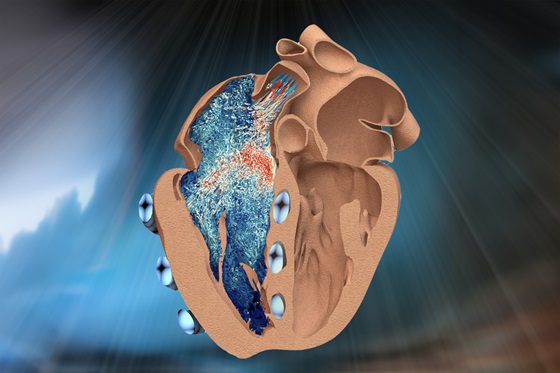Engineers from the Massachusetts Institute of Technology (MIT) have unveiled a robotic replica of the heart’s right ventricle. This model aims to revolutionize the understanding of heart disorders and enhance the development of effective heart implants.
The robotic right ventricle (RRV) is not just a static model but a dynamic replica that simulates the beating and blood-pumping action akin to a live heart. This technological marvel combines authentic heart tissue with advanced artificial muscles in a balloon-like structure, allowing scientists to meticulously control and observe the heart’s natural valves and intricate functions.
A feature of the artificial ventricle is its versatility in representing various cardiac states. The MIT team has fine-tuned the model to emulate conditions like pulmonary hypertension and myocardial infarction. This functionality was put to the test when a mechanical valve was implanted to rectify a malfunctioning natural valve, revealing insights into how such interventions alter the heart’s pumping efficiency.
Discovery
Manisha Singh, a postdoctoral associate at MIT’s Institute for Medical Engineering and Science, emphasized the potential of the RRV in understanding and preventing right heart failure, particularly in intensive care scenarios. The model promises to be an invaluable tool for studying right ventricle disorders and evaluating therapies and devices aimed at treating them.
The research, detailed in an open-access paper in Nature Cardiovascular Research, is the result of a collaborative effort. The team, including Associate Professor Ellen Roche and experts from prestigious institutions, has designed the model to capture the anatomical complexities and the pumping function of the right ventricle.
Beats
The right ventricle, often overshadowed by its more robust counterpart, the left ventricle, plays a crucial but less understood role in pumping deoxygenated blood to the lungs. Roche likens it to a “ballerina,” handling a lighter yet vital load with more complex architecture and motion. This intricacy has posed challenges in diagnosing and treating right ventricle dysfunctions, which the RRV aims to address.
The incorporation of real heart tissue into the model ensures the preservation of natural structures, too delicate and complex to replicate synthetically. The team’s innovative approach allows them to explore the heart’s behavior in unprecedented detail, offering new vistas in cardiac research and treatment.
Image: MIT

